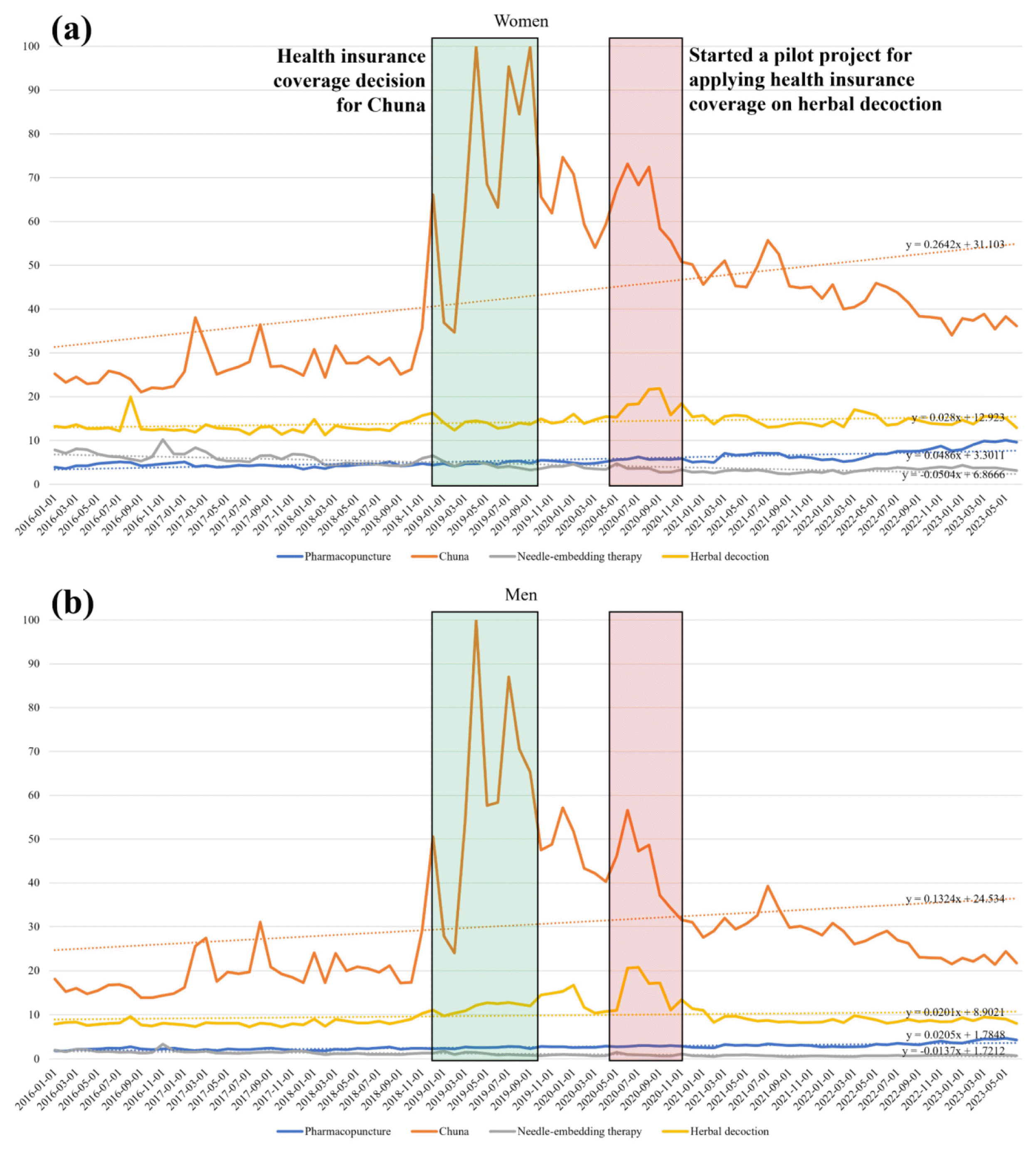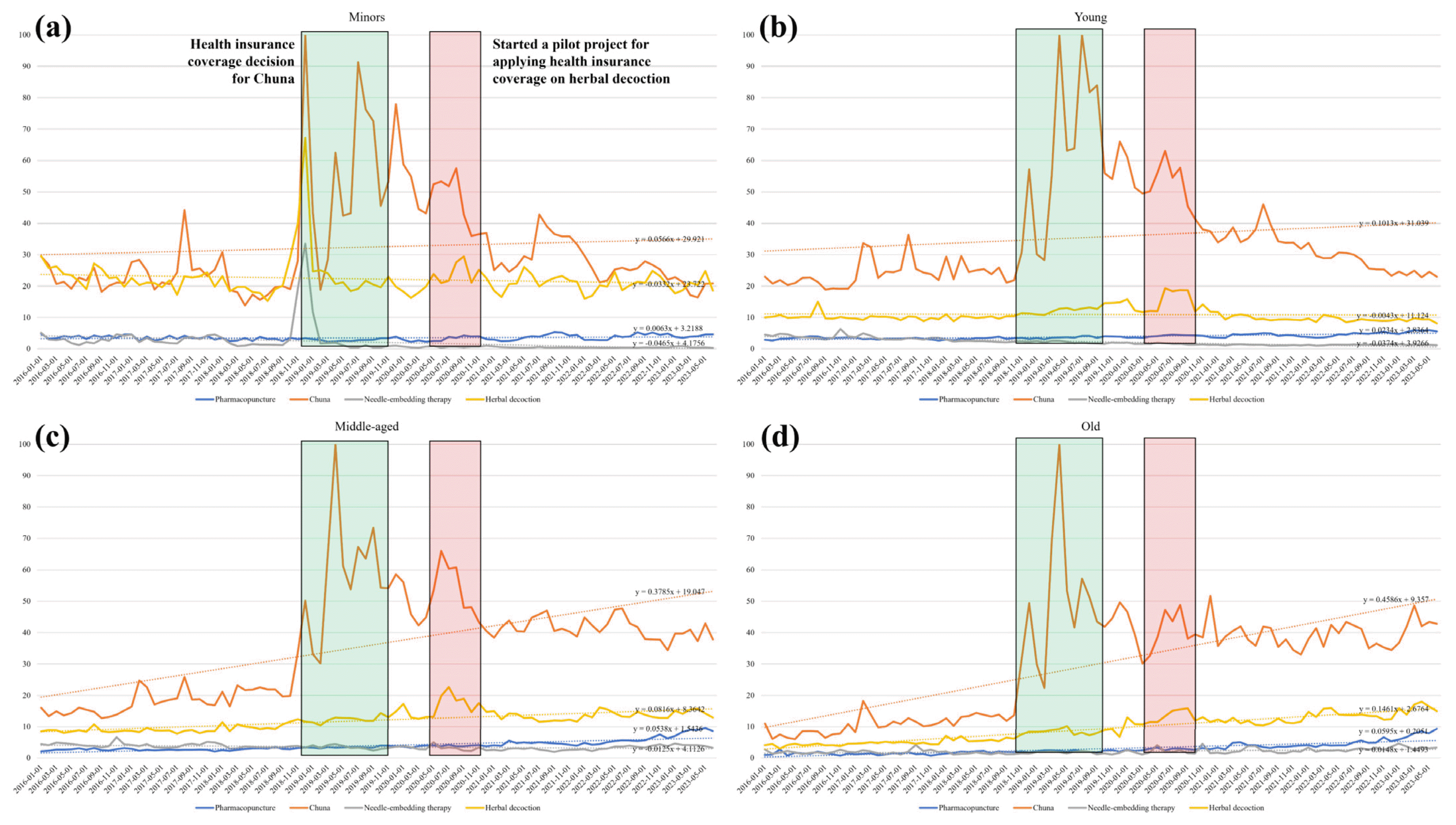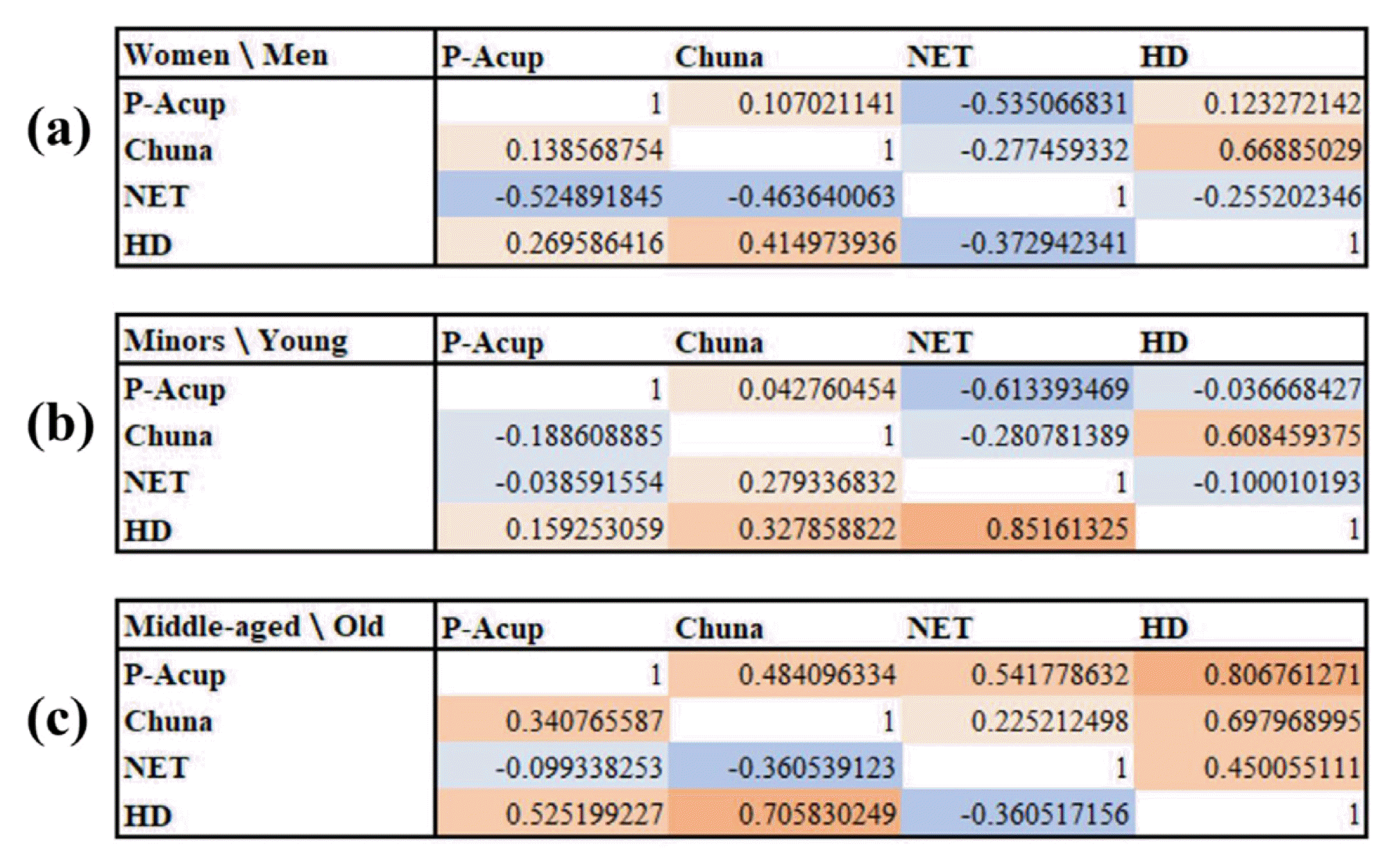A Study on Major Uninsured Korean Medicine Treatments Search Trends and Their Meanings in an Online Portal: Using Naver Data Lab
Article information
Abstract
Objectives
The purpose of this study was to examine search trends and their meanings for major uninsuired Korean medicine (KM) treatments through analysis of an online portal search results.
Methods
Keywords searches were performed using Naver Datalab on 4 July 2023. From January 2016 to June 2023, monthly relative search volume (RSV) for keywords ‘pharmacopuncture’, ‘Chuna’, and ‘needle-embedding therapy’, and ‘herbal decoction’ were extracted with a score between 0 and 100. For the obtained RSVs, longitudinal changes over time, characteristics according to sex and age group, and correlations between them were investigated.
Results
The ranking of RSV for each keyword has changed from ‘Chuna’, ‘herbal decoction’, ‘needle-embedding therapy’, and ‘pharmacopuncture’ to ‘Chuna’, ‘herbal decoction’, ‘pharmacopuncture’, and ‘needle-embedding therapy’ after 2019. Overall, the RSV of needle-embedding therapy continuously decreased, while that of pharmacopuncture continuously increased. In 2019, a rapid increase in the RSV of Chuna was observed, and in 2020, a rapid increase in the RSV of herbal decoction was observed. There was a difference in the longitudinal change pattern of RSV for the keywords by age group. Importantly, in the elderly, changes in RSV were observed in a favorable pattern to KM treatment.
Conclusion
Our findings enable estimation of the public’s interest and its changes for the four uninsuired KM treatment, and can be used as basic data to strengthen health insurance coverage in Korea. Specifically, changes in interest in KM treatments according to sex and age can be referred to.

Search trends of the four major uninsured Korean medicine treatments classified by sex: (a) Women, (b) men.
Note. The x-axis of the graph represents the monthly time point, and the y-axis represents the relative search volume. The linear dotted line means the trend line, and the linear equation formula is calculated and displayed at the right end of the trend line.

Search trends of the four major uninsured Korean medicine treatments classified by age group: (a) Minors, (b) Young, (c) Middle-aged, (d) Old.
Note. The x-axis of the graph represents the monthly time point, and the y-axis represents the relative search volume. The linear dotted line means the trend line, and the linear equation formula is calculated and displayed at the right end of the trend line.

Correlation between relative search volume trends of four major uninsured Korean medicine treatments: (a) Women and men, (b) Minors and young, (c) Middle-aged and old.
Note. The value of cells indicates the CORREL correlation coefficient between −1 (negative) and 1 (positive). The color of the cell indicates the gradient and intensity. That is, the closer to orange, the stronger the positive correlation, and the closer to blue, the negative correlation (Divided into three levels: weak, moderate, and strong correlation, respectively).
Abbreviations. HD, herbal decoction; NET, needle-embedding therapy; P-Acup, pharmacopuncture.
